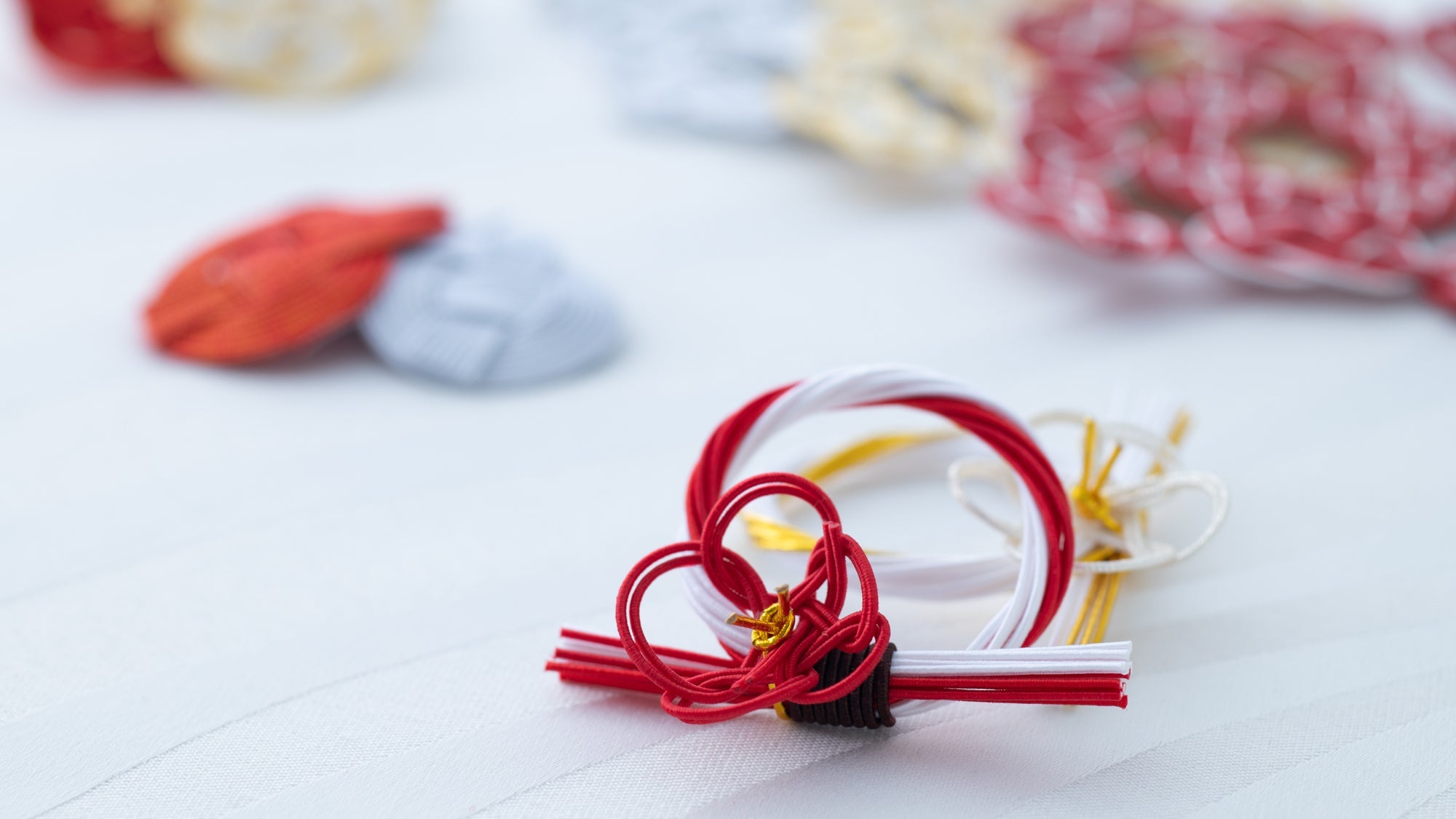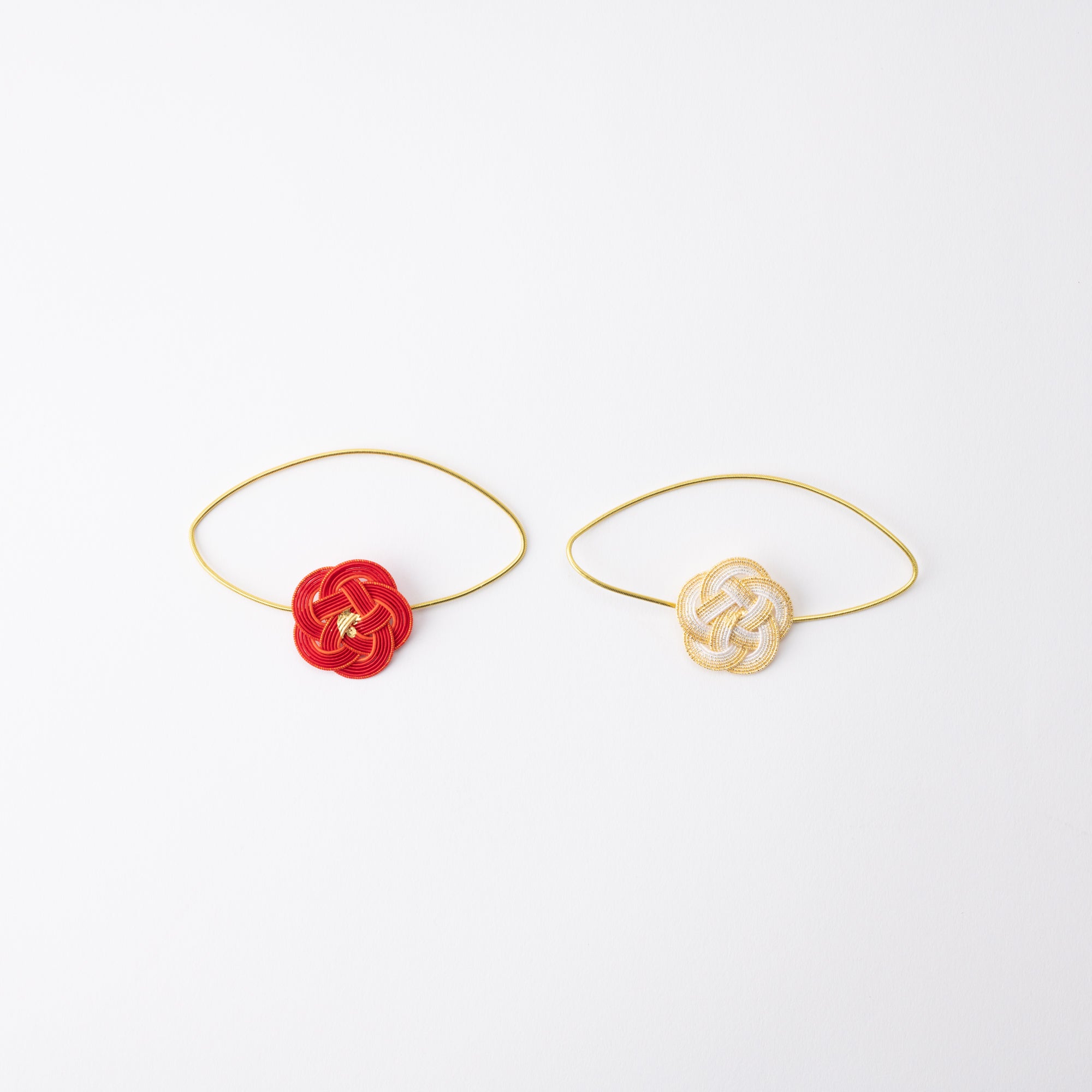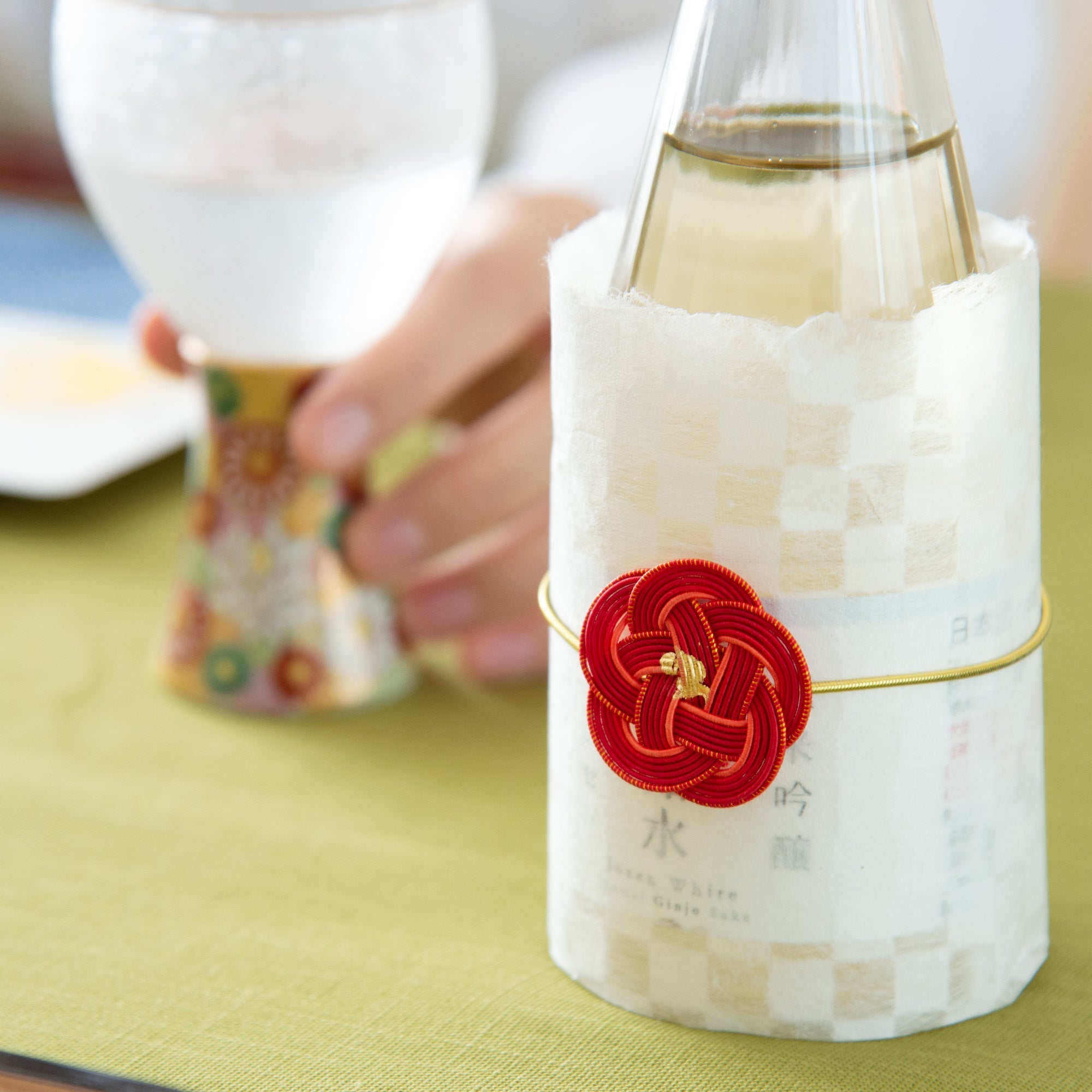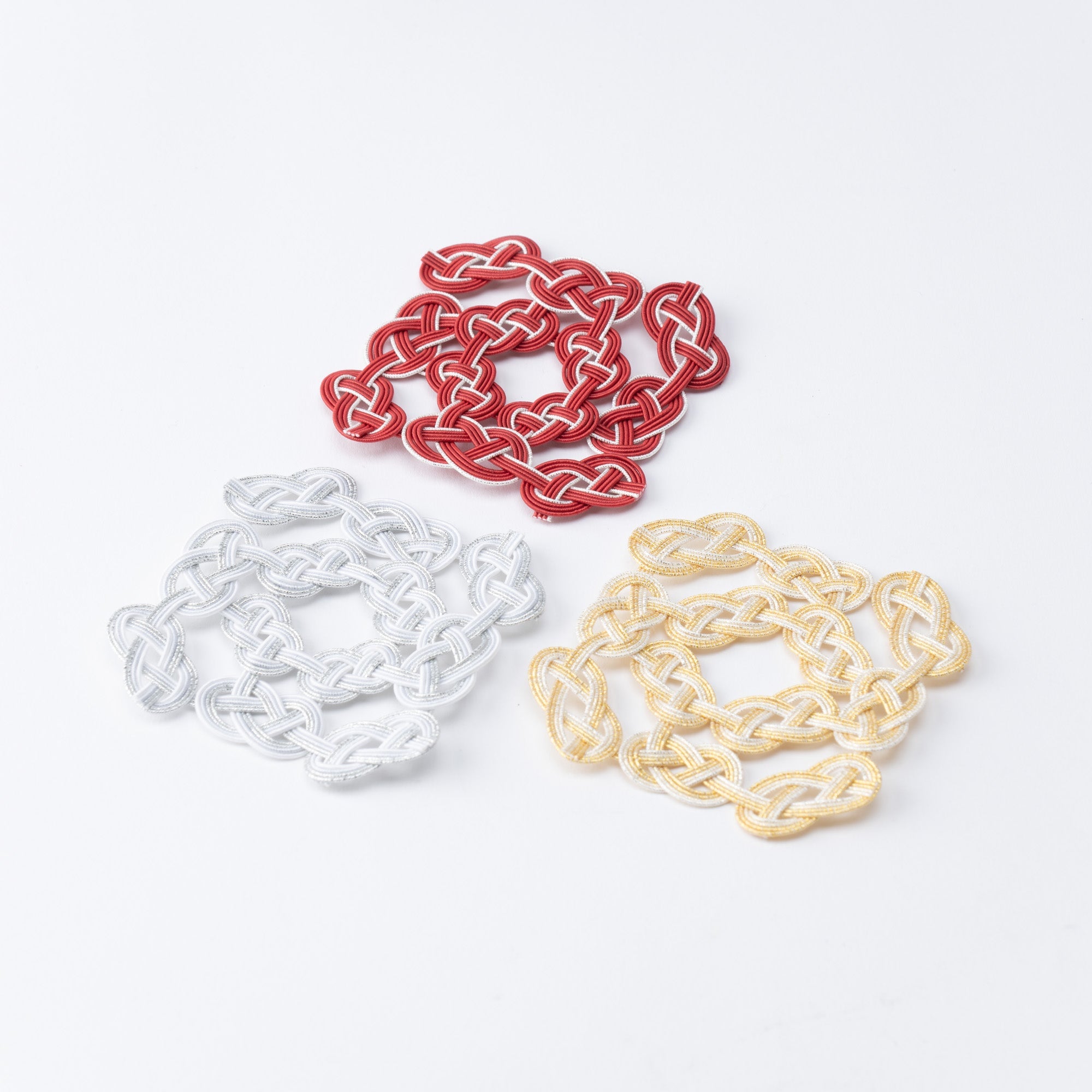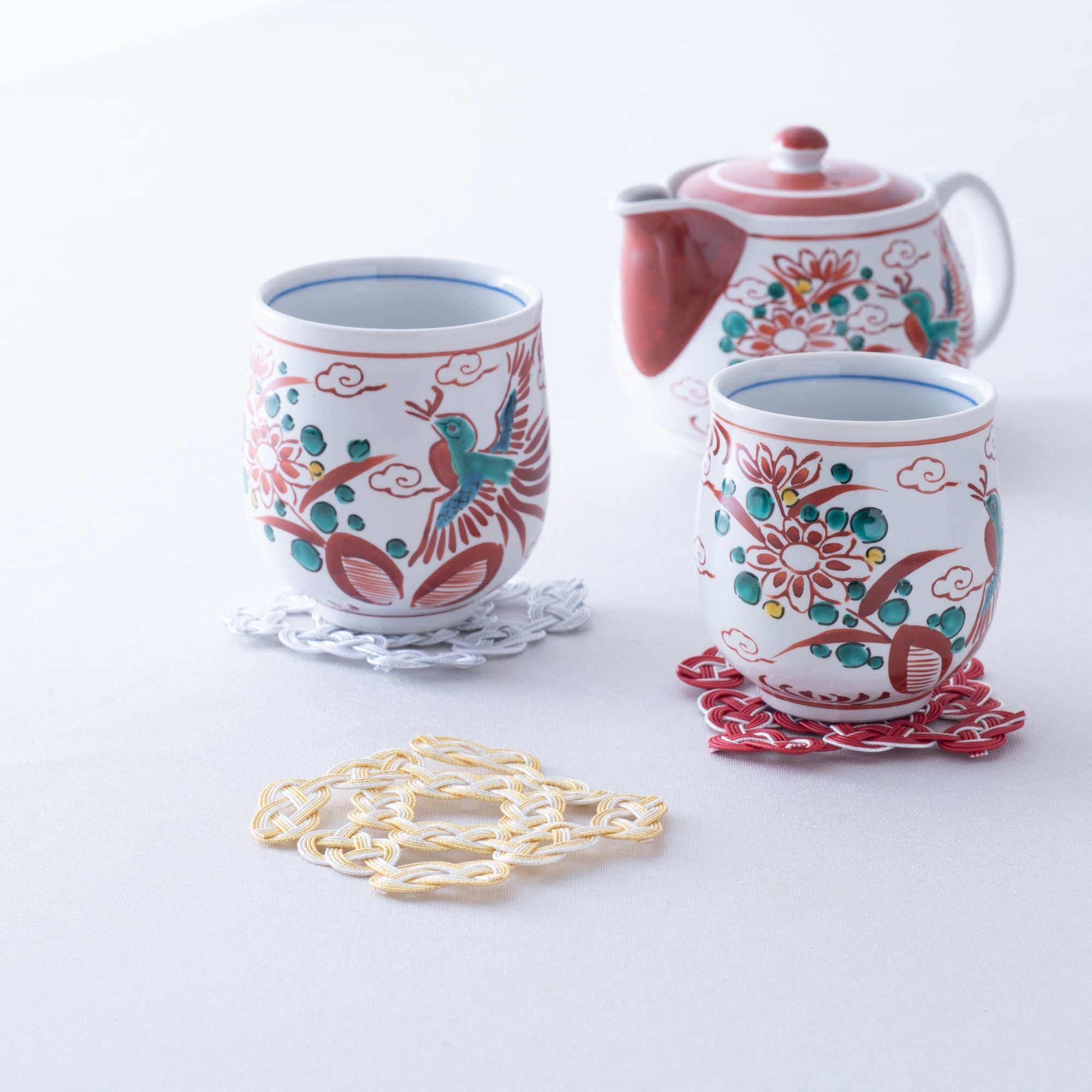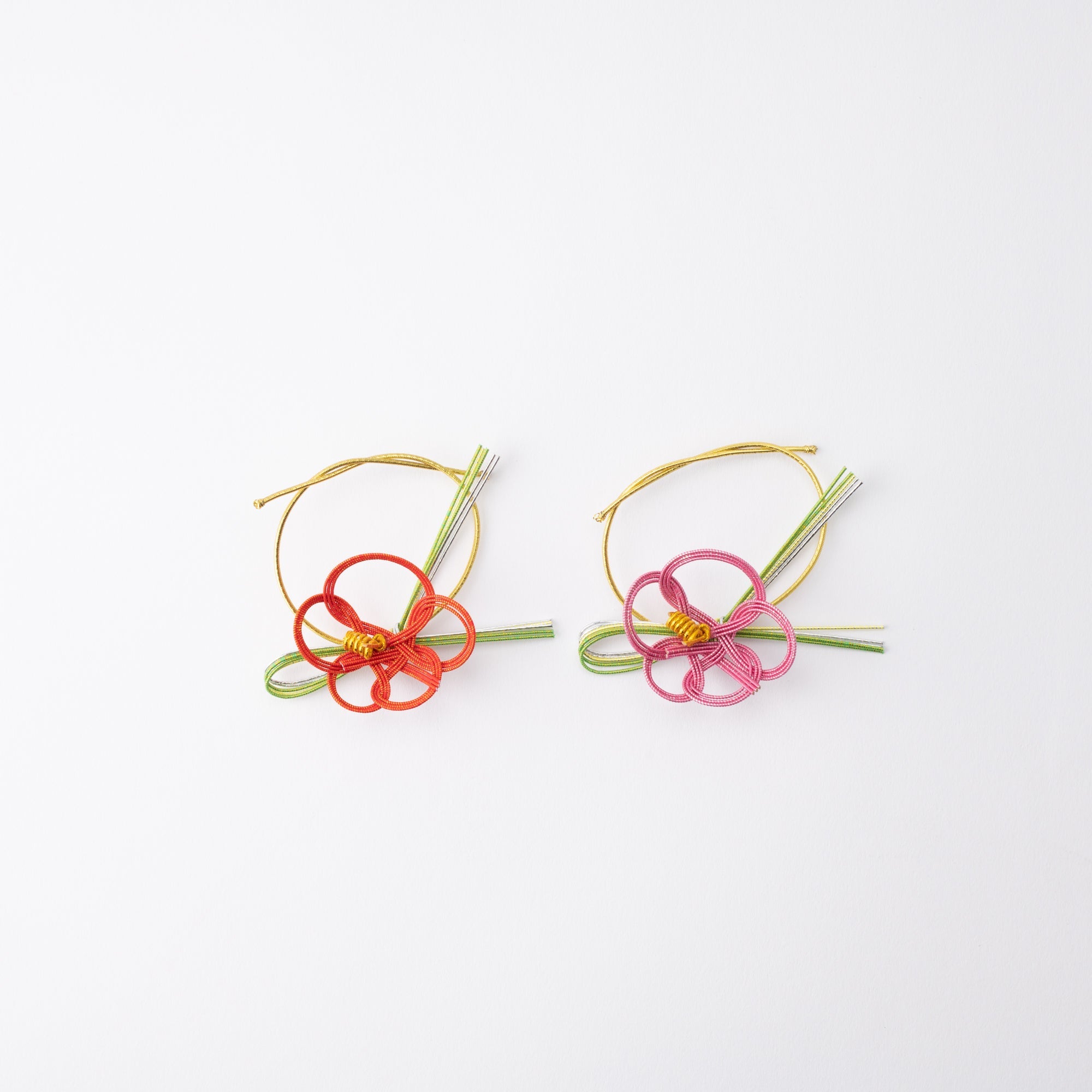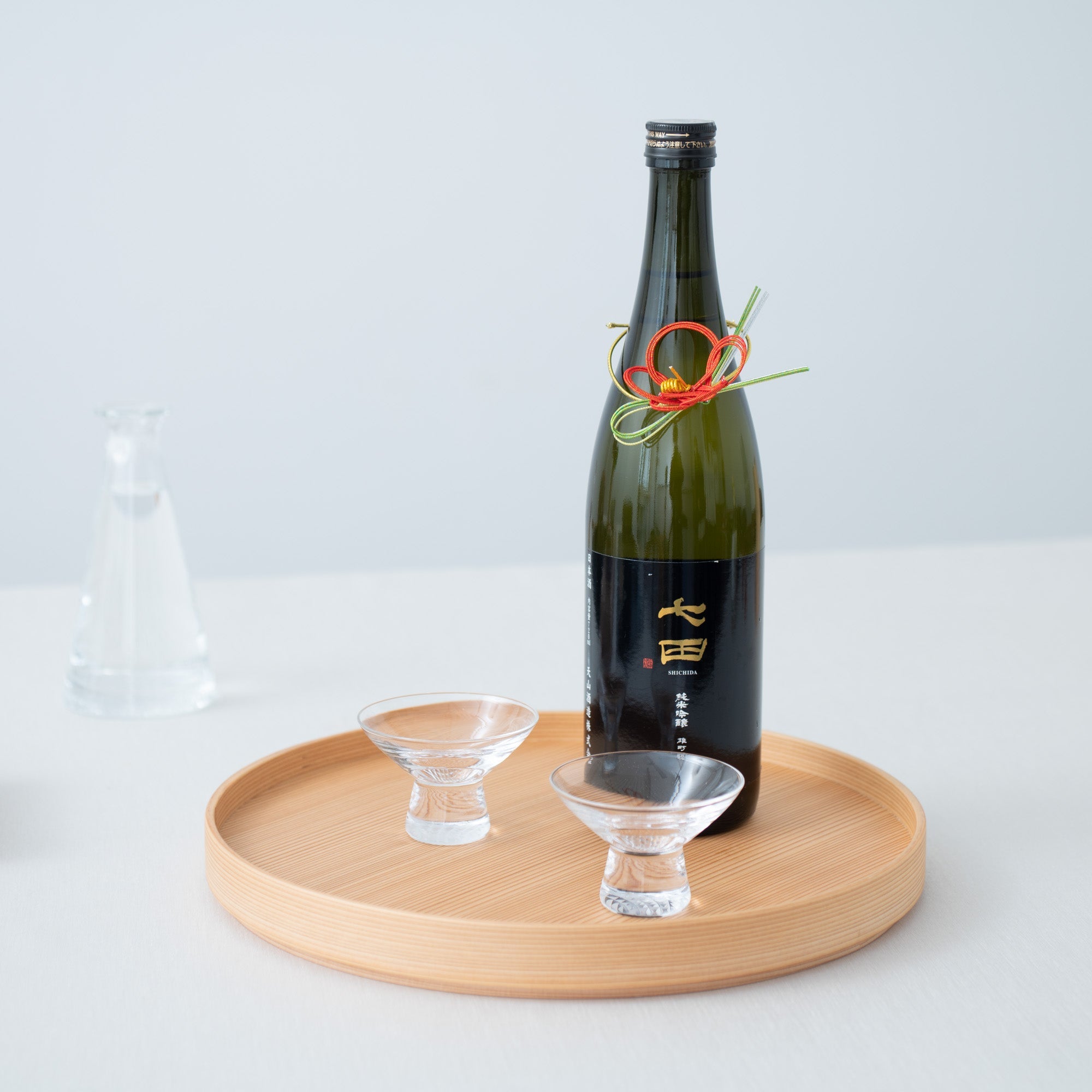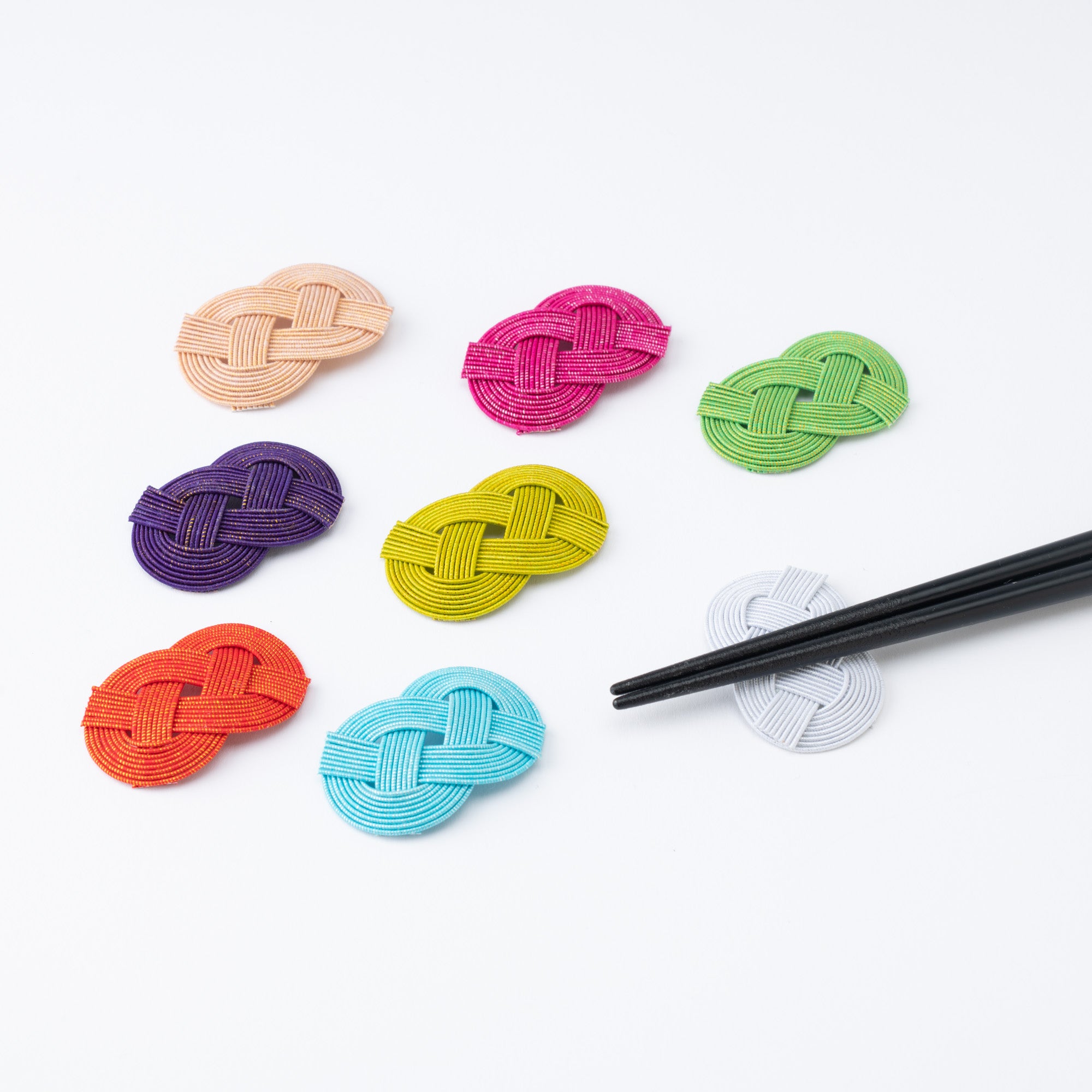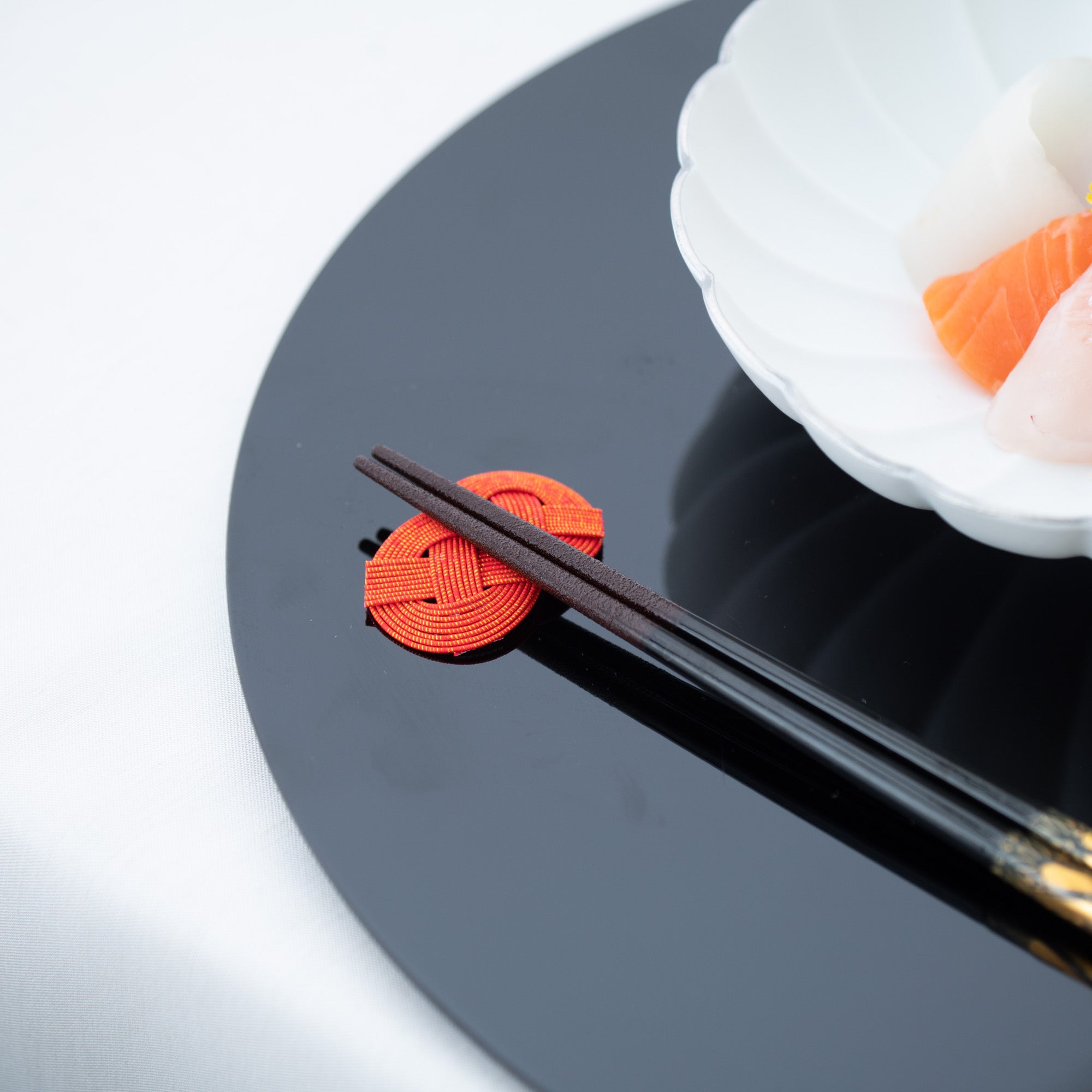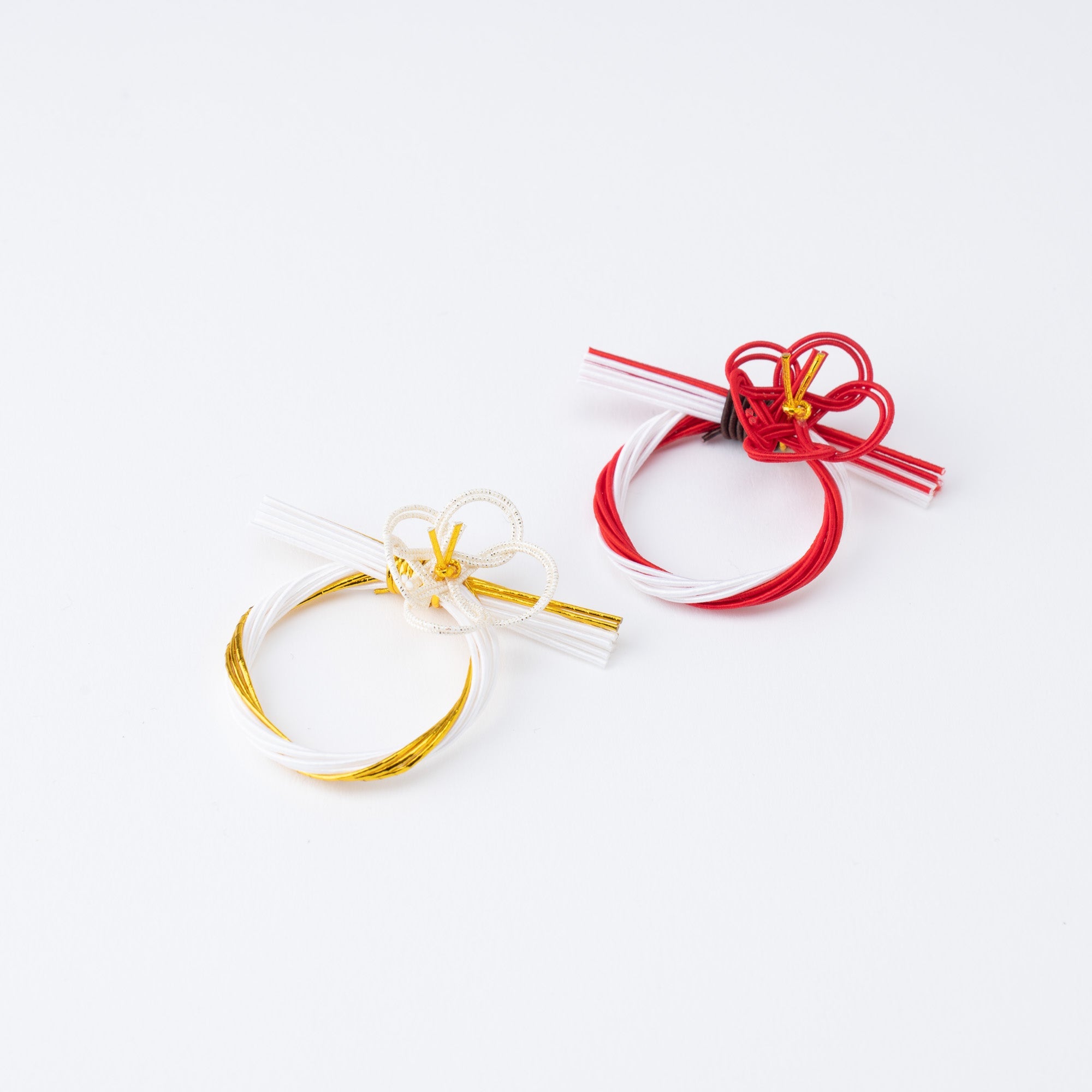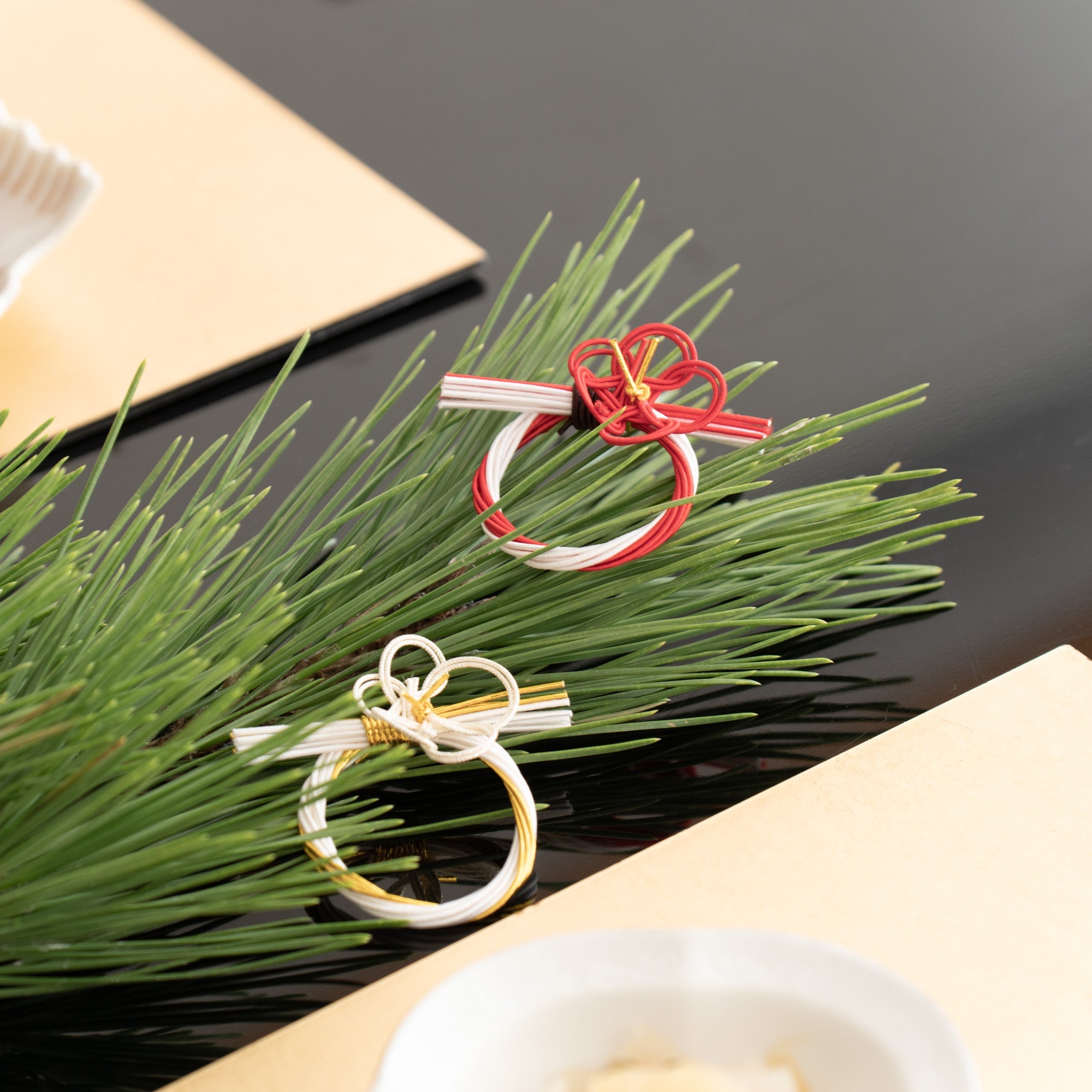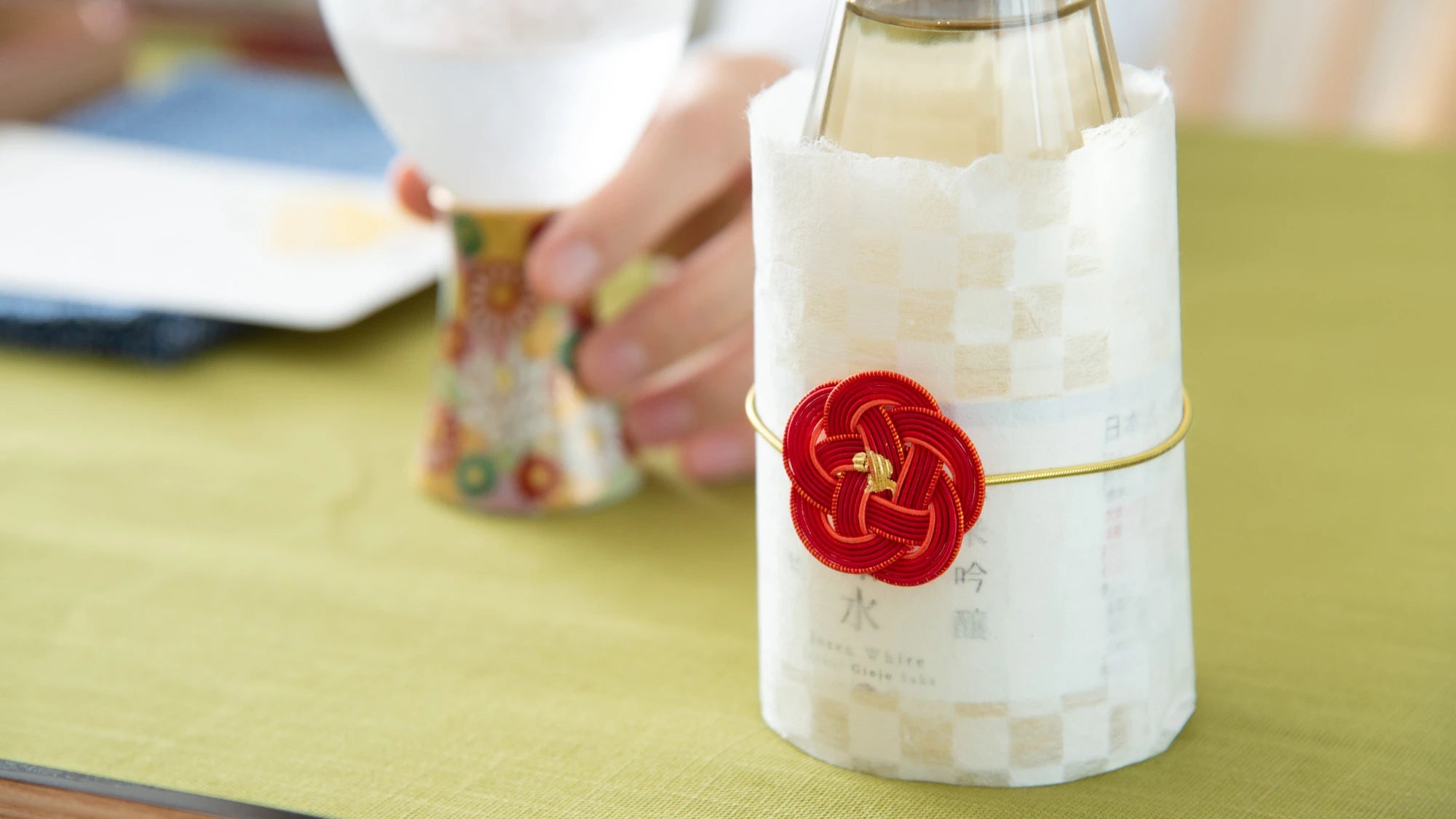
Kaga Mizuhiki
The techniques of Kaga mizuhiki, based in Kanazawa City, Ishikawa Prefecture, have a storied history. Around 1915, the first generation, Tsuda Sokichi, innovated off of the typical two-dimensional string folds of mizuhiki knots to create new three-dimensional forms. Ume Tsuda, the second generation, inherited the technique and established Kaga mizuhiki craftsmanship as a definitive art form. The company has now been passed down to the fifth generation, and continues to evolve while preserving and passing on the true essence of mizuhiki.
Mizuhiki is a kind of cord, often banded with red and white or black and white, used to decorate gift wrapping and at occasions like weddings and funerals. These decorative strings are often seen on special envelopes for monetary gifts, which consist of a folded piece of paper called an origata tied with a mizuhiki.
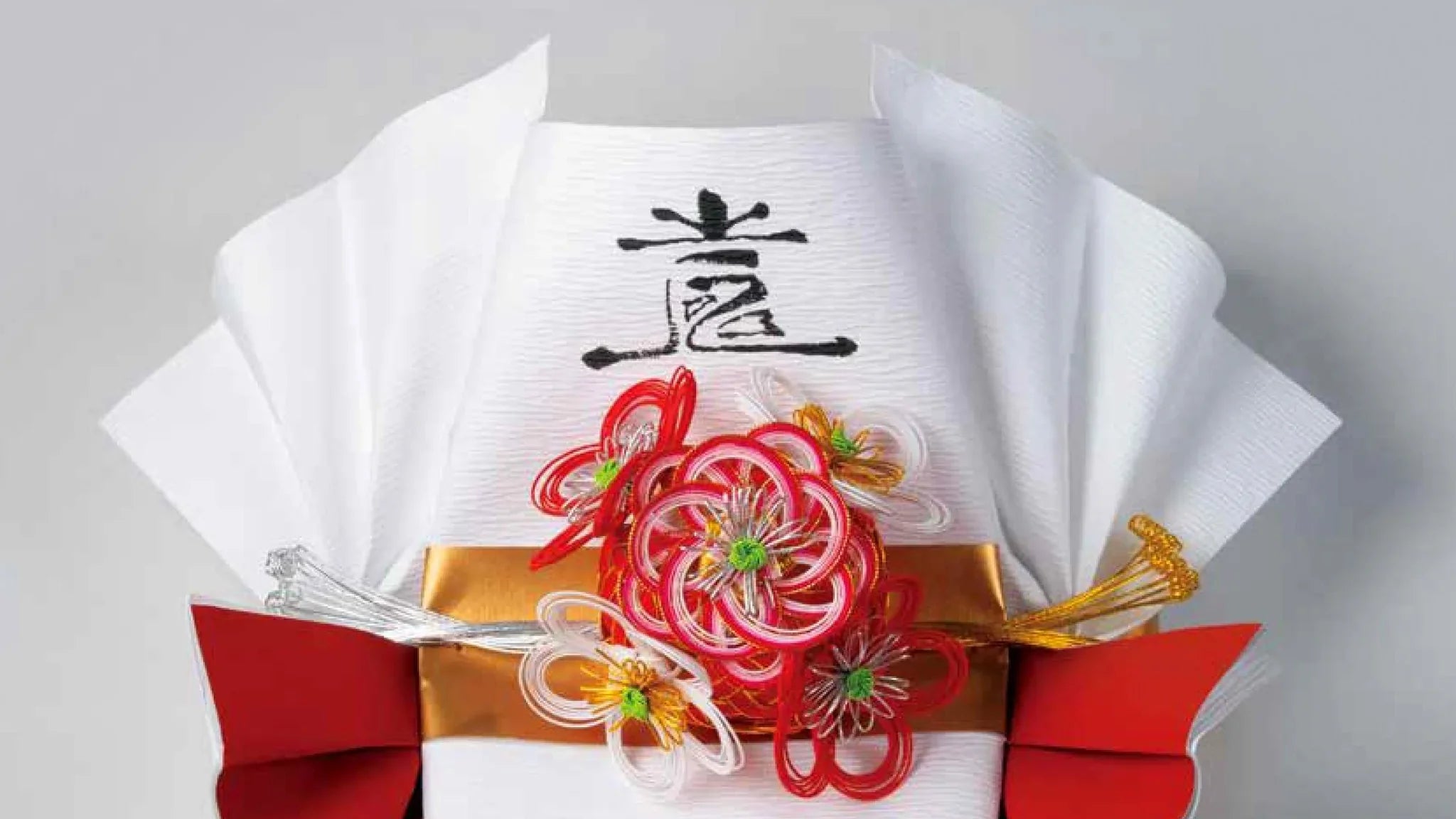
Around 1915, Tsuda Sokichi, the founder of Kaga Mizuhiki, studied the Ogasawara style of mizuhiki and origata that were then beginning to spread. However, it was quite difficult to fold the origata tightly, especially because many of the knots were complicated and differed depending on the occasion. Tsuda Sokichi, who valued mizuhiki and origata for their graceful and clean appearance, came up with an idea during the course of his diligent studies. Instead of folding the origata flat, he kept it light and three-dimensional and tied it at the center with mizuhiki. With this style, technical defects are not noticeable, and a voluminous and elegant form is created.
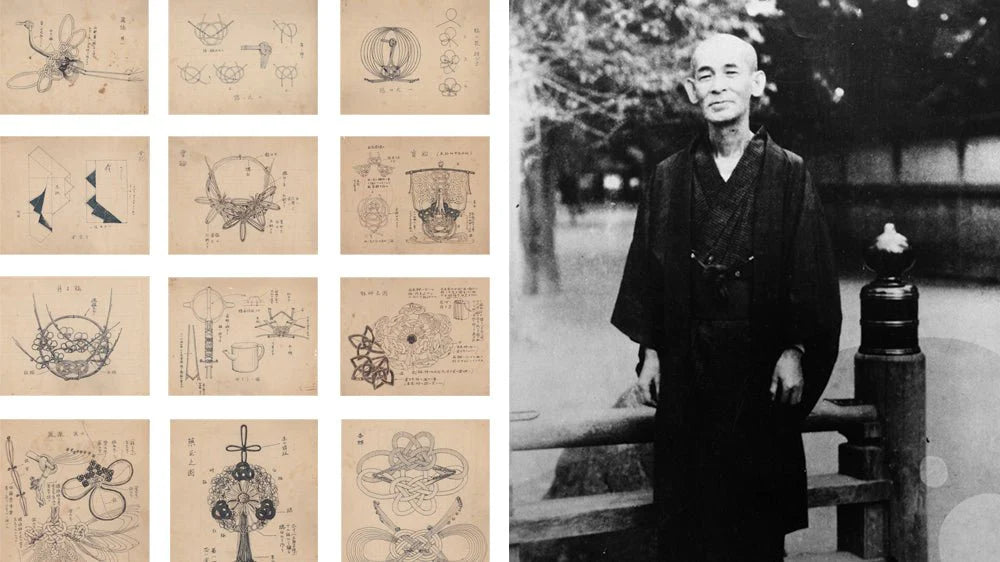
A three-dimensional origata inevitably led to the creation of a three-dimensional mizuhiki knot; in other words, mizuhiki string work. The paired sets of mizuhiki and origata seen throughout Japan today are strongly influenced by the ideas of Tsuda Sokichi. Even now, about one hundred years later, mizuhiki craftspeople are still using the origata and mizuhiki string work created by Tsuda Sokichi as the basis for the production of betrothal gifts and envelopes for monetary gifts.
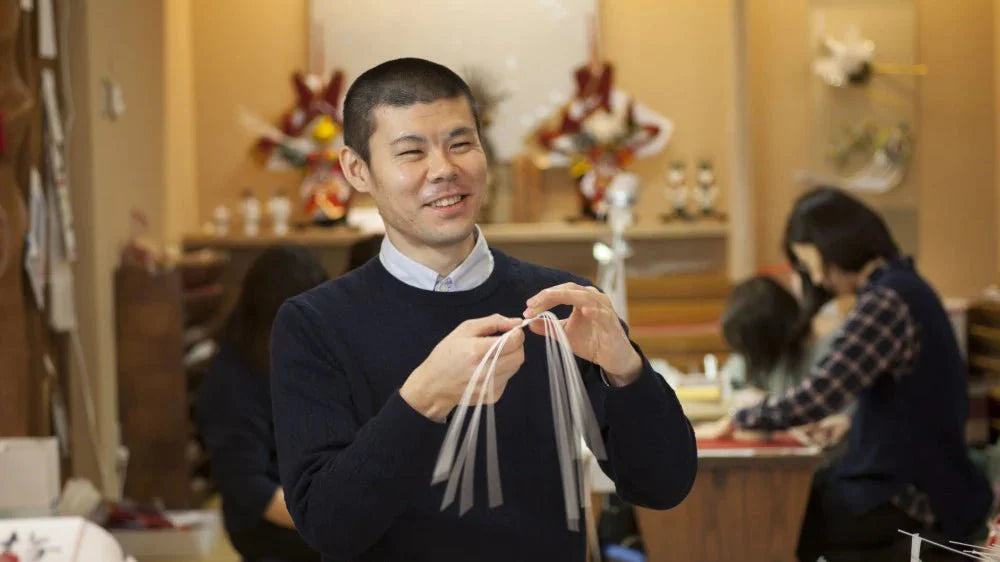
Makers
Filters


